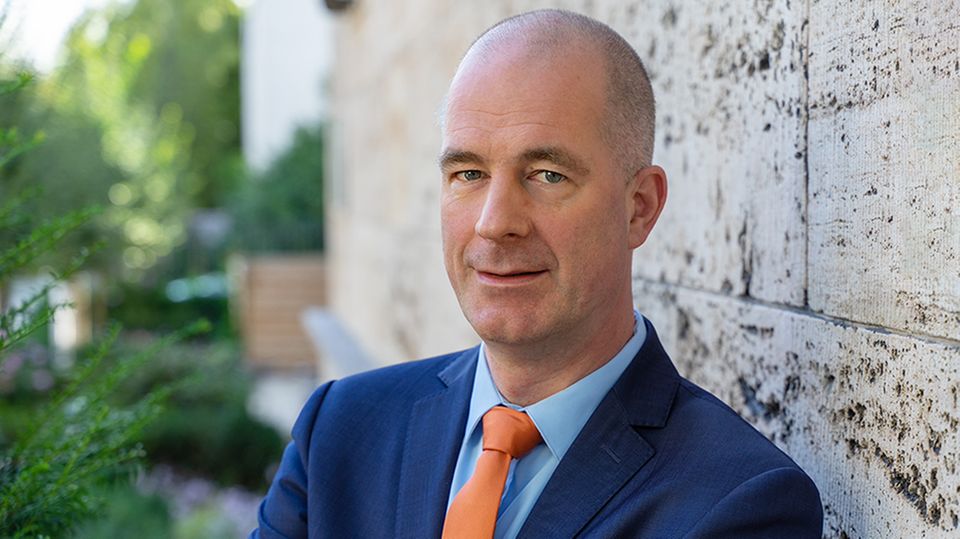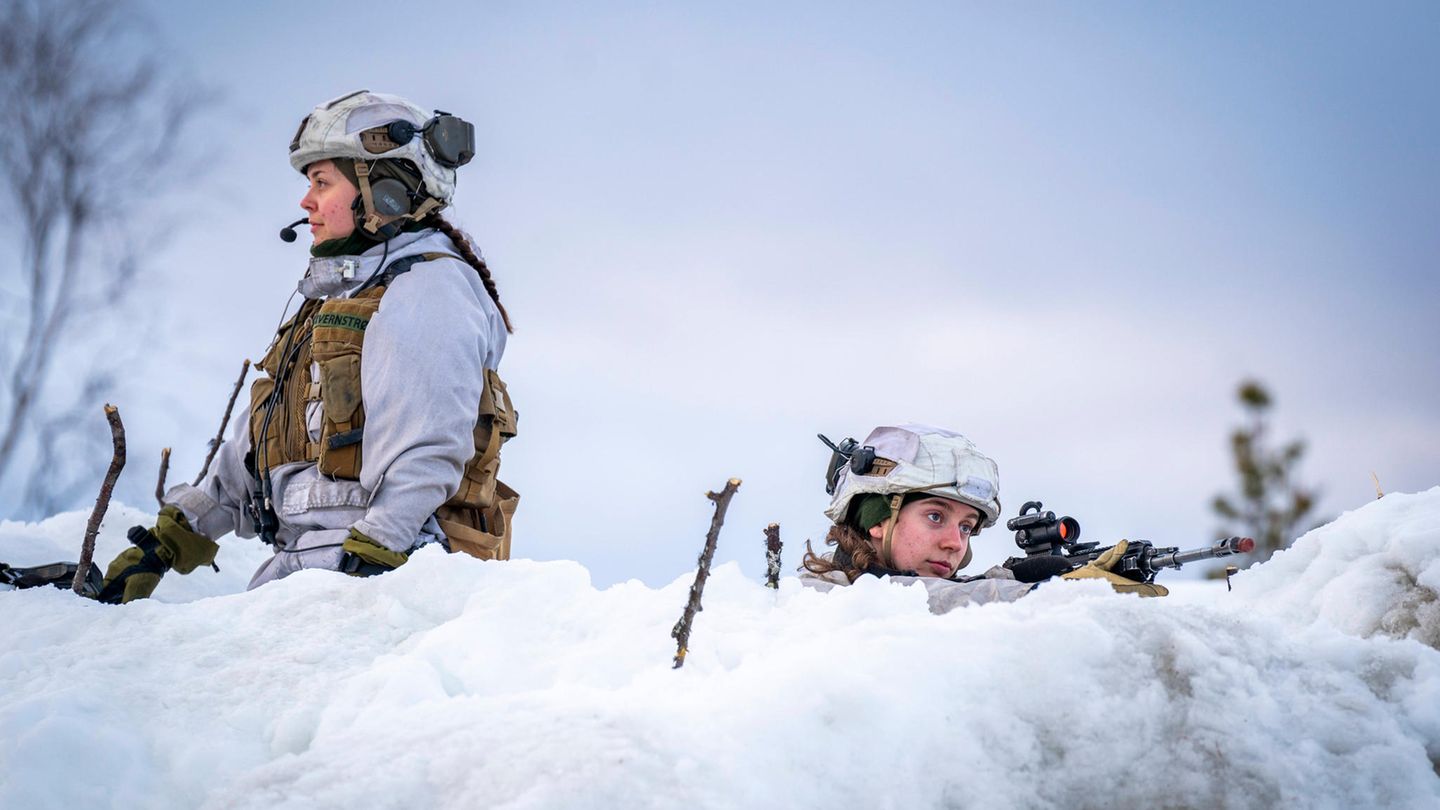A majority of Germans want conscription back – including Defense Minister Pistorius. But that alone is not a magic bullet, say experts. What ideas we could import from Sweden, Lithuania or France.
Norway’s border with Russia: Young people sit in the watchtowers and keep a lookout. Defense Minister Boris Pistorius, in turn, observes those doing military service. He later enthusiastically told journalists that he thought it was great that the young people were sitting there without cell phones. During his trip through Scandinavia at the beginning of March, Pistorius spoke with counterparts and met Bundeswehr troops at the NATO exercise Nordic Response 2024, where they are preparing for an attack scenario together with allied forces.
Pistorius said several times that he was very impressed by the young Norwegian tower guards in the border town of Kirkenes. Three weeks without a cell phone, freezing temperatures, sleeping outside. And all of this at your own request. There is compulsory military service in Norway. But particularly suitable military service members must apply for the special guard position on the Russian border.
A youth ready for war – will this soon also be available in Germany?
According to one, a slim majority of Germans – 52 percent – support compulsory service in the Bundeswehr. It’s not just since his trip through Sweden, Norway and Finland that Pistorius has been fueling the debate about whether Germany should return to active military service. The Defense Minister wants to present his ideas on this in April.
In Europe, ten countries currently have active conscription: Estonia, Lithuania, Norway, Austria, Switzerland, Greece, Turkey, Cyprus, Denmark and Sweden. Pistorius describes the Swedish model as “particularly suitable”.
Sweden’s conscription as a role model for Germany?
In Sweden, everyone receives a letter from the muster authority on their 18th birthday. Since compulsory military service was reinstated in 2017, it has applied equally to men and women. The young people have to fill out an online questionnaire about their level of education, health and motivation. The information will be used to decide who will be invited to the sampling. That’s only about one in three.
The young men and women then go through interviews and tests for two days – physical fitness and mental health play a role. In the end, only 8,000 of a year (out of around 100,000 initially contacted) are appointed to the one-year training course. About 21 percent of them are women. After their basic training, recruits are obliged to support their unit if the government calls on them, for example in the event of a crisis. Sweden assumes that this will cover the army’s defense personnel needs.
During his trip through Scandinavia, Pistorius also wanted to check whether the Swedish model could be transferred to Germany and, with regard to the much larger German population, he noted: With ten percent of a year, that would be 40,000 men a year in Germany alone. The women who are also examined in Sweden are not even included. “That makes it clear that this couldn’t be transferred one-to-one.”
The Bundeswehr currently does not have enough trainers and barracks for such a large number of military servicemen. And in order for women to be drafted as conscripts, the Basic Law would first have to be changed. Nevertheless, Sweden can serve as a role model. The head of the Center for Security and Defense at the German Society for Foreign Policy, Christian Mölling, says in star, It also makes sense for Germany to have everyone tested first, as with the Swedish model: “Lisa Müller is so physically fit, we can train her to be a pilot within two years. And her brother Hans Müller has bad knees, we don’t need him at all “We urgently need this preparation in Germany.”
It therefore makes sense to have widespread reporting points for the Bundeswehr where you can be registered. “There are also people who like to come voluntarily. Germany needs to build this infrastructure as quickly as possible.” The district military replacement offices, which were responsible for selecting those doing military service for decades, no longer exist. Infrastructure like this would have to be rebuilt after compulsory military service was suspended in Germany in 2011.

According to Mölling, this must happen as quickly as possible. “If we look at the threat situation in Europe, then we have to say: time is running out. We have to quickly prepare the army and population in Germany for a possible crisis.”
Sweden reactivated conscription in 2017 in part because of Russia’s annexation of Crimea a few years earlier. Since the large-scale war against Ukraine, other countries have also been preparing for a possible attack by Russia.
Denmark wants to draft women
The Danish armed forces want to draft women into military service for the first time in their history. The country is currently restructuring its army, partly because of the increasing threat from Russia. “We are not arming because we want war. We are arming because we want to avoid it,” said Prime Minister Mette Frederiksen in her announcement. The government wants to achieve “full gender equality” and extend the length of military service from four to eleven months. According to the Ministry of Defense’s plans, 5,000 conscripts will be called up every year from 2026. The government’s plan is not yet legally binding. Conscripts should only be called up if there are not enough volunteers.
If compulsory military service were to be reinstated in Germany, it would probably also apply to women for the first time. Military expert Christian Mölling: “Today’s compulsory military service in Germany could no longer be carried out without women – for reasons of justice, but also because we no longer want to do without the skills of the female population.”
However, experts are also of the opinion that conscription alone is not a silver bullet that will solve all national defense problems. Mölling says that in a war you need three circles: an active army. A reserve that the active army can replenish if it dies. And a population that supports the whole thing – that understands the role of the army, that wants to be defended and that also actively contributes to it. In other words, people who are not part of the army but are still preparing for a possible crisis.
Riflemen’s Union in Lithuania – civil defense as a mass phenomenon
People are preparing, especially in the Baltic states, which are in the immediate vicinity of Russia. Estonia, Latvia and Lithuania have been EU and NATO members for 20 years. The experiences from the times of Soviet rule are still deeply rooted in many residents. Fearing an attack by Russia, some civilians are preparing themselves. Volunteers in the Lithuanian Rifle Union – a paramilitary organization – practice navigating in the forest and handling weapons. On weekends, in her free time. How do you let your group know when you see enemy soldiers? What do you do when you retreat if the situation becomes too dire? How do you camouflage yourself, how do you shoot? Students, mothers, fathers, but also young people, who make up a third of the participants – they all want to know what to do if there is a Russian invasion.
The Rifle Union is an integral part of Lithuania’s defense strategy alongside the Lithuanian Army and the volunteer association Savanorių pajėgos – the National Guard of Lithuania. In the event of defense, the members of the Union are subordinate to the military. In the event of war, they are primarily responsible for maintaining the infrastructure and providing for the population. The association has 14,000 members, not much smaller than Lithuania’s army. The government is now investing five times as much money in the rifle union as it did before Russia’s attack on Ukraine, for example for weapons and protective clothing. Similar organizations exist in Latvia, Estonia, Finland and Poland.
National service in France
President Emmanuel Macron introduced “universal national service” in 2019. Young people aged 16 to 25 can volunteer to serve their country for a month. There is discussion about making the service compulsory. The young people are housed in shared accommodation. They all wear the same white polo shirts and the same dark blue pants. Their day begins with flag raising and the singing of the national anthem, cell phones remain switched off during the day. Sports, lessons about civil rights, about the country’s culture and history, and about French values are part of the daily routine. The young people help with ecological or social clubs, the fire department, the police or the military. They also take first aid courses and learn rules of conduct in the event of terrorist attacks.
Experts repeatedly demand that the population as a whole be prepared for crises – not just by the military. Security expert Mölling, for example, says that the population can also be prepared for crises through general service obligations. For example, if you work in a building authority and spend twelve months learning which bridges are relevant in the region and how to rebuild them. Or with computer specialists who learned what their role in cyber defense would be in the event of a crisis. “You don’t have to be a soldier to support your country.”
Source: Stern
I have been working in the news industry for over 6 years, first as a reporter and now as an editor. I have covered politics extensively, and my work has appeared in major newspapers and online news outlets around the world. In addition to my writing, I also contribute regularly to 24 Hours World.




